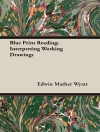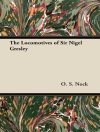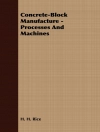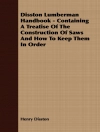This book features selected high-quality research papers presented at the International Conference on Machine Intelligence and Signal Processing (MISP 2019), held at the Indian Institute of Technology, Allahabad, India, on September 7–10, 2019. The book covers the latest advances in the fields of machine learning, big data analytics, signal processing, computational learning theory, and their real-time applications. The topics covered include support vector machines (SVM) and variants like least-squares SVM (LS-SVM) and twin SVM (TWSVM), extreme learning machine (ELM), artificial neural network (ANN), and other areas in machine learning. Further, it discusses the real-time challenges involved in processing big data and adapting the algorithms dynamically to improve the computational efficiency. Lastly, it describes recent developments in processing signals, for instance, signals generated from Io T devices, smart systems, speech, and videos and addresses biomedical signal processing: electrocardiogram (ECG) and electroencephalogram (EEG).
Содержание
Ring Partition Based Fingerprint Indexing Algorithm.- A Novel Approach for Music Recommendation System using Matrix Factorization Technique.- Generation of Image Captions using VGG and Res Net CNN Models Cascaded with RNN Approach.- Face Classification across Pose by Using Non-Linear Regression and Discriminatory Face Information.- Emotion Recognition from Facial Images for Tamil Language Speakers.- A Phase Noise Correction Scheme for Multi-channel Multi-echo SWI processing.- A Scanning Technique based on Selective Neighbour Channels in 802.11 Wi-Fi Networks.- Persistent Homology Techniques for Big Data and Machine Intelligence: A survey.- Concave Point Extraction: A Novel Method for WBC Segmentation in ALL Images.- Speech Emotion Recognition for Tamil Language Speakers.- Real Time RADAR and LIDAR Sensor Fusion
for Automated Driving.- Generalizing Streaming Pipeline Design for Big — Data.- Adaptive Fast Composite Splitting Algorithm for MR Image Reconstruction.- Extraction of Technical and Non-technical skills for Optimal Project-Team Allocation.- Modified Flower Pollination Algorithm for Optimal Power Flow in Transmission Congestion.- Intelligent Condition Monitoring of a CI Engine Using Machine Learning and Artificial Neural Networks.- Bacterial Foraging Optimization in Non-identical Parallel Batch Processing Machines.- Healthcare Information Retrieval based on Neutrosophic Logic.- Convolutional Neural Network Long Short-Term Memory (CNN+LSTM) for Histopathology Cancer Image Classification.- Forecasting with Multivariate Fuzzy Time Series: A Statistical Approach.- Nature-Inspired Algorithm-Based Feature Optimization for Epilepsy Detection.- A Combined Machine-Learning Approach for Accurate Screening and Early Detection of Chronic Kidney Disease.- Backpropagation and Self Organizing Map Neural Network Methods for Identifying Types of Eggplant Fruit.- Head Pose Prediction while Tracking Lost in a Head Mounted Display.- Recommendation to Group of Users using The Relevance Concept.- ACA: Attention based Context-aware Answer selection system.- Dense and Partial Correspondence in Non-Parametric Scene Parsing.- Audio Surveillance System.- MOPSA: Multiple Output Prediction for Scalability and Accuracy.- Impact of Cluster Sampling on the Classification of Landsat-8 Remote Sensing Imagery.- Deep Neural Networks for Out-Of-Sample Classification of Non-Linear Manifolds.- FPGA implementation of LDPC Decoder.- A Multiclass Classi_cation of Epileptic Activity in Patients using Wavelet Decomposition.- Hexa-Directional Feature Extraction for Target-Specific Handwritten Digit Recognition.- Cardiovascular Disease Prediction using Machine Learning Tools.- Analysis of Global Motion Compensation and Polar Vector Median for Object Tracking Using St-MRF In Video Surveillance.
Об авторе
Dr. Sonali Agarwal is Associate Professor at Indian Institute of Information Technology Allahabad, Prayagraj, U.P., India. Her main research areas are data mining, software engineering and machine learning. She has published several research papers in academic journals and international proceedings. She has served as a guest editor for special issues in several journals, program committee member for many conferences and chaired several conferences. She also organized several national/international workshops and conferences. She is a senior member of IEEE and a member of IEEE CIS and ACM. Prof. Shekhar Verma is a Professor at Indian Institute of Information Technology Allahabad, Prayagraj, U.P., India. His main research areas are wireless sensor network, cryptography, cloud computing and machine learning. He has published several papers in academic journals and international proceedings. He has served as a guest editor for special issues in several journals, program committee member for many conferences and chaired several conferences. He also organized several national/international workshops and conferences. Dharma P. Agrawal has been the OBR Distinguished Professor at the University of Cincinnati, since August 1998. He is co-author of textbooks Introduction to Wireless and Mobile System (4th edition) , and Ad hoc and Sensor Networks (2nd edition), co-edited Encyclopedia on Ad Hoc and Ubiquitous Computing, and Embedded Sensor Systems. He is the Fellow of IEEE, ACM, AAAS, NAI, IACSIT, and WIF. He is a Golden Core member of the IEEE-CS and recipient of the IEEE Third Millennium Medal. He has published over 684 articles, 42 keynote speeches, 67 intensive courses, 8 patents and 25 invention disclosures, supervised 75 Ph.D. dissertations and led UCBT Bluetooth package. He has been on the editorial boards of IEEE Transactions on Computers, IEEE Computer, Journal of High Speed Computing, JPDC, and is serving IJCN, JECE, IJSIA, IJDSN, IJAHUC, IJAHSWN, JDSN, and IJWMC and founding EIC of the Central European Journal of Computer Science. He is Editor-in-Chief for the Journal of Sensor and Actuator Networks. His research interests include applications of sensor networks in monitoring Parkinsons disease patients and neurosis, applications of sensor networks in monitoring fitness of athletes personnel wellness, applications of sensor networks in monitoring firefighters physical condition in action, efficient secured communication in Sensor networks, secured group communication in Vehicular Networks, use of Femto cells in LTE technology and interference issues, heterogeneous wireless networks, and resource allocation and security in mesh networks for 4G technology.












